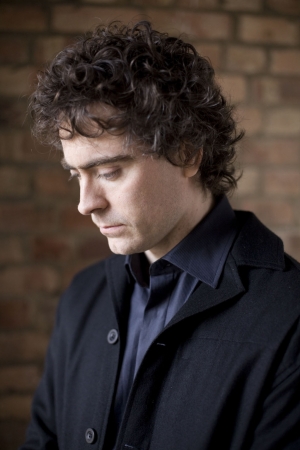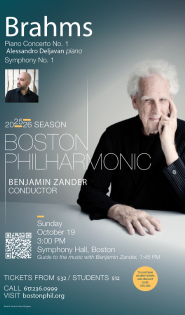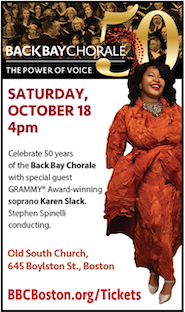Honeck, Lewis and BSO bring fresh life to familiar works
The Boston Symphony Orchestra’s Friday night program at Tanglewood was over in a flash—barely an hour and a half, including intermission. But there were plenty of gems along the way in a concert that sported an innocent, childlike grin from first note to last. The phrase “short but sweet” has seldom felt more appropriate.
Making his Tanglewood debut on the podium was Manfred Honeck, filling in for Christoph von Dohnányi, who had to withdraw due to an illness in his family (Honeck will also conduct Saturday’s performance of Mahler’s Symphony No. 2.) He led the orchestra as though he had chosen the program himself, bringing intelligent and idiomatic conducting to each selection.
The Overture to The Creatures of Prometheus, which opened the program, is a slight piece by Beethovenian standards, but Honeck’s reading of it was enchanting. He coaxed spirited playing out of the orchestra, with brash excitement in the strings and playful bubbling in the winds.
Paul Lewis was the soloist for Mozart’s Piano Concerto No. 12. This is not the deepest of Mozart’s piano concerti, nor the most difficult, but Lewis gave it a bravura performance nonetheless. After a sunny and cheerful exposition from the orchestra, the entrance of the piano positively glowed. Lewis’s playing was crisp and playful, each keystroke bursting with life. The first movement’s cadenza was more poetic than virtuosic, fitting with the self-assured modesty of the piece.
Lewis took a calm, meditative pace for the Andante, and he phrased the music gorgeously. The texture of his playing was at once clear and rich. He spun a thoughtful cadenza with effortless grace, leading into his final trill with a short, measured arpeggio that glimmered and then faded with breathtaking beauty. The closing Rondo was pure delight, all easy effervescence.
Mendelssohn’s Symphony No. 4 (“Italian”) was not as electric, beginning-to-end, as it might have been. The Andante con moto had a stately sobriety to it, coming down from the euphoric high of the first movement, but it seemed to be over in a flash—granted, it is short, as are all of the movements of this symphony, but it felt as though there was no time or space for reflection. The same was true of the finale, which whizzed by, all a blur, with a few passages flubbed in the woodwinds.
The third movement offered a change of pace and was fresher than either of its neighbors. It had a gentle, dancing character throughout, finding more muscle in the middle section without clobbering the music. Honeck, a violinist and violist himself, gave rein to his strings, allowing them to breathe freely into their carefree lilt.
The opening Allegro vivace, though, made any subsequent shortcomings seem trivial. This was an absolutely masterful performance. The symphony opened with spectacular brightness and skipped along gleefully, sunshine incarnate. Honeck and the BSO executed precise and full dynamics, showing a stunning variety of levels and massive crescendi that came out of nowhere. Every time the opening theme returned, it brought with it a joyous thrill.
Manfred Honeck leads the BSO in Mahler’s Symphony No. 2 at 8:30 p.m. Saturday. bso.org.
Eric C. Simpson is Assistant Editor of The New Criterion.
Posted in Performances





